String-Theory-Systems
Chapter 2 – String Theory Systems
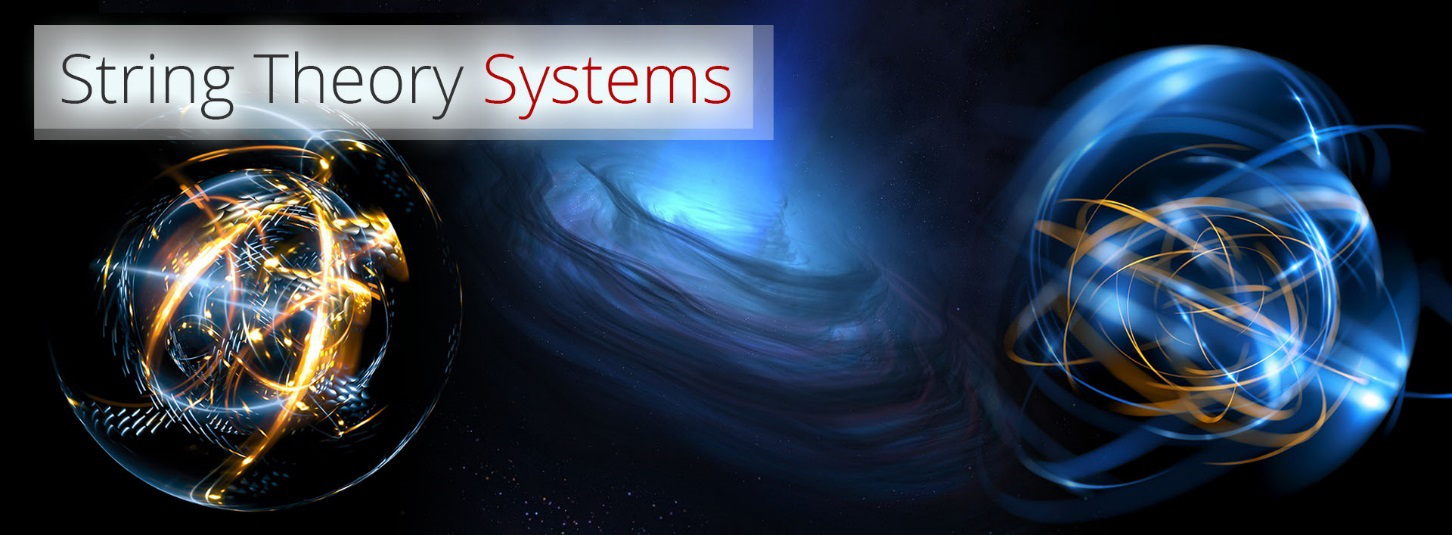
I have taken a bit of a risk and presented my own description of String Theory, albeit framed around the work of eminent professors. However, as best I know, I have not heard anyone say, ‘string theory needs only to unify Einstein’s Special Relativity, not General Relativity to create a theory of everything,’ and therein lies the risk. However, I think Professor Edward Witten’s point on General Relativity (presented shortly) being ‘for free’ essentially leads to this conclusion.
In this chapter, I first present my explanation of string theory, and then follow it up with analogies, metaphors, or simulations into the economics and/or behavioral economics of S-World. Where after, I dig deeper with some more obscure string theory in the ‘Green Symmetry’ and ‘Super Coupling’ which provide the inspiration for ‘Supereconomics’ from now until 2080.
What is String Theory?
In simple terms, String Theory is the branch of theoretical physics that unifies the jittery and uncertain discipline of quantum mechanics with the predictable and smooth General Relativity (Einstein’s Theory of Gravity).
What is ‘The Theory of Everything?’
In terms of physics, ‘The Theory of Everything’ is the branch of theoretical physics that unifies the jittery and uncertain quantum mechanics with the predictable and smooth General Relativity (Einstein’s Theory of Gravity).
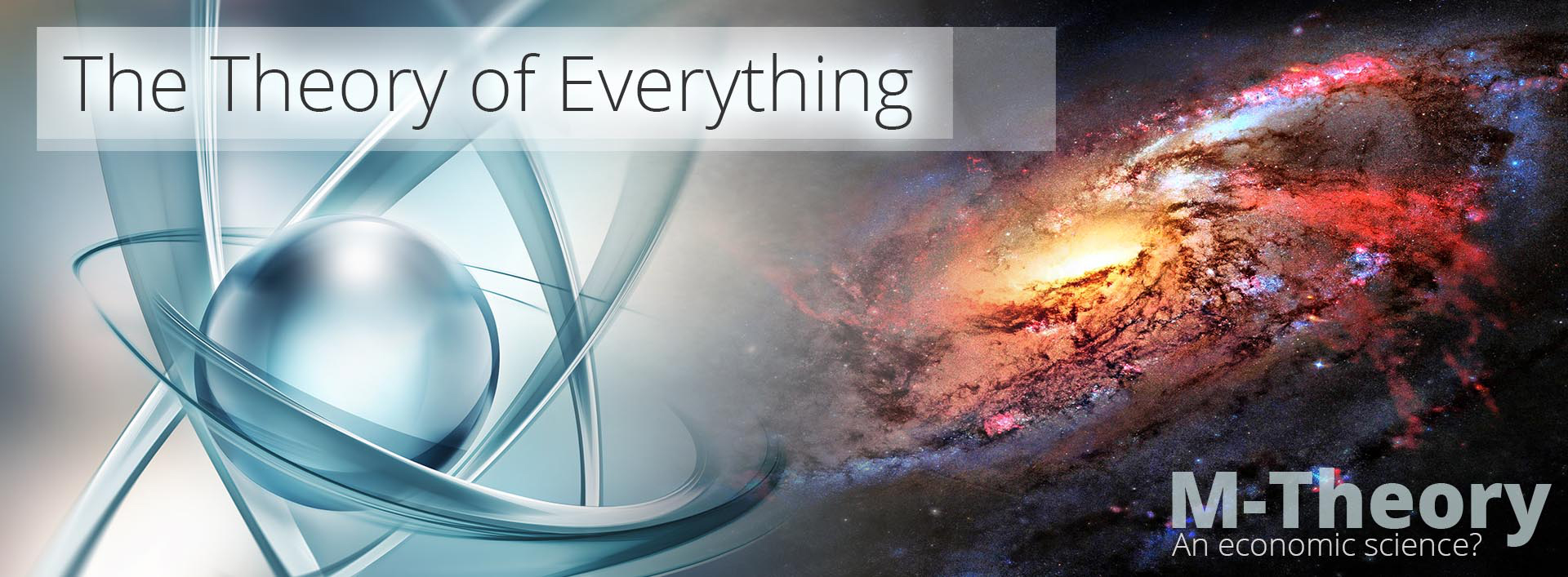
So, (in essence) they’re the same thing.
The Theory of Everything is ‘what’ will unite quantum mechanics and general relativity, and string theory is the ‘how.’
When working in string theory, one is effectively working in both quantum mechanics and general relativity. As such, this chapter will include some general relativity and quantum mechanics but primarily is a tale of String Theory and economics; or if you prefer, Economic String Theory.
In this chapter, we find qualities in string theory and simulate them into a design for a more equal and extremely powerful economic design, based on principles from the laws of nature, as described by string and M-theory.
How does String Theory unify quantum mechanics and general relativity?
The Peet Tent
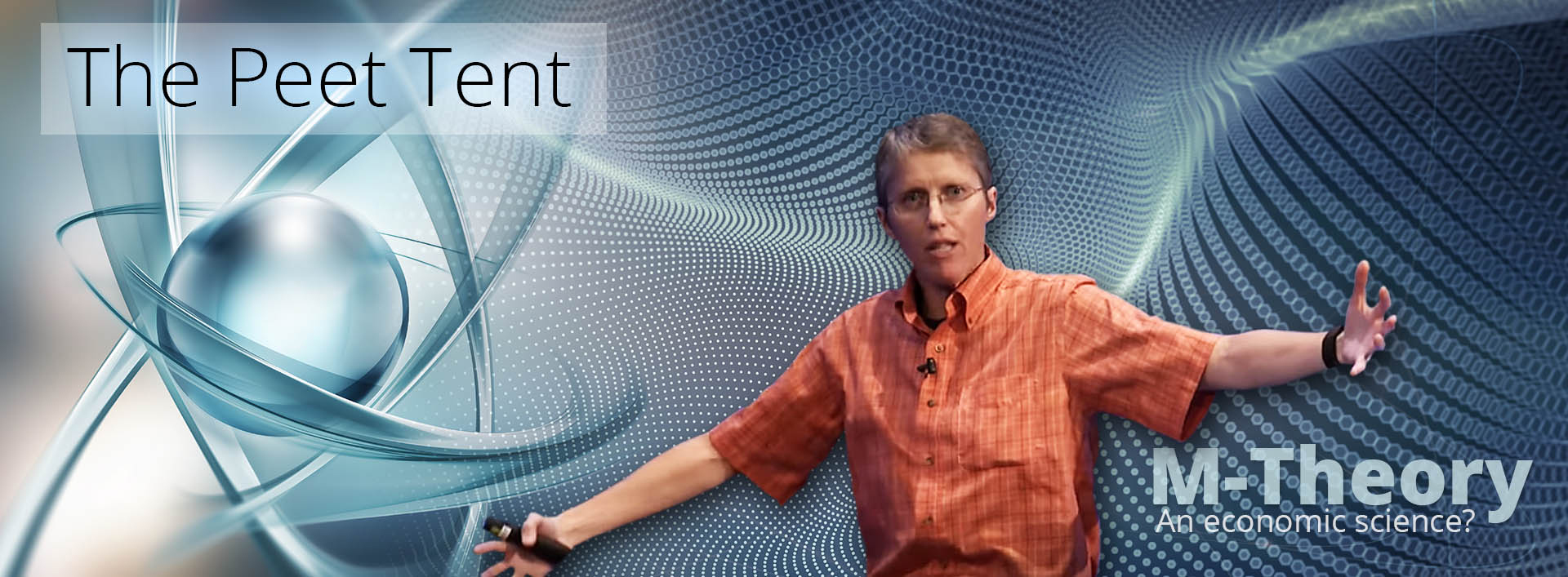
In 2012, the Peet Tent originated from Professor A.W. Peet’s lecture: ‘String Theory for the Scientifically Curious . At the time, I had just completed the book/paper I was writing about, the economics of a Grand Network in ‘American Butterfly Book 1. ‘The Theory of Every Business.’
Then in Chapter 8, I had the series of eureka moments, which led to more theoretical work and two more books/papers in the American Butterfly series: Book 2. ‘Spiritually Inspired Software,’ and Book 3. ‘The Network on A String, and specific to the development of ‘The Peet Tent’ see Book 3. ‘The Network on A String’ – Analogy 2 – String Theory.
Skip 4 years, mostly spent on the web and software development, to the spring of 2016 when I watched A.W’s second public lecture, ‘String Theory Legos for Black Holes,’ which helped develop ‘Analogy 2’ into The Peet Tent, which gave me a better understanding of the phenomenon in physics.
Let’s hear from Professor A.W. Peet.
The Peet Tent in Physics
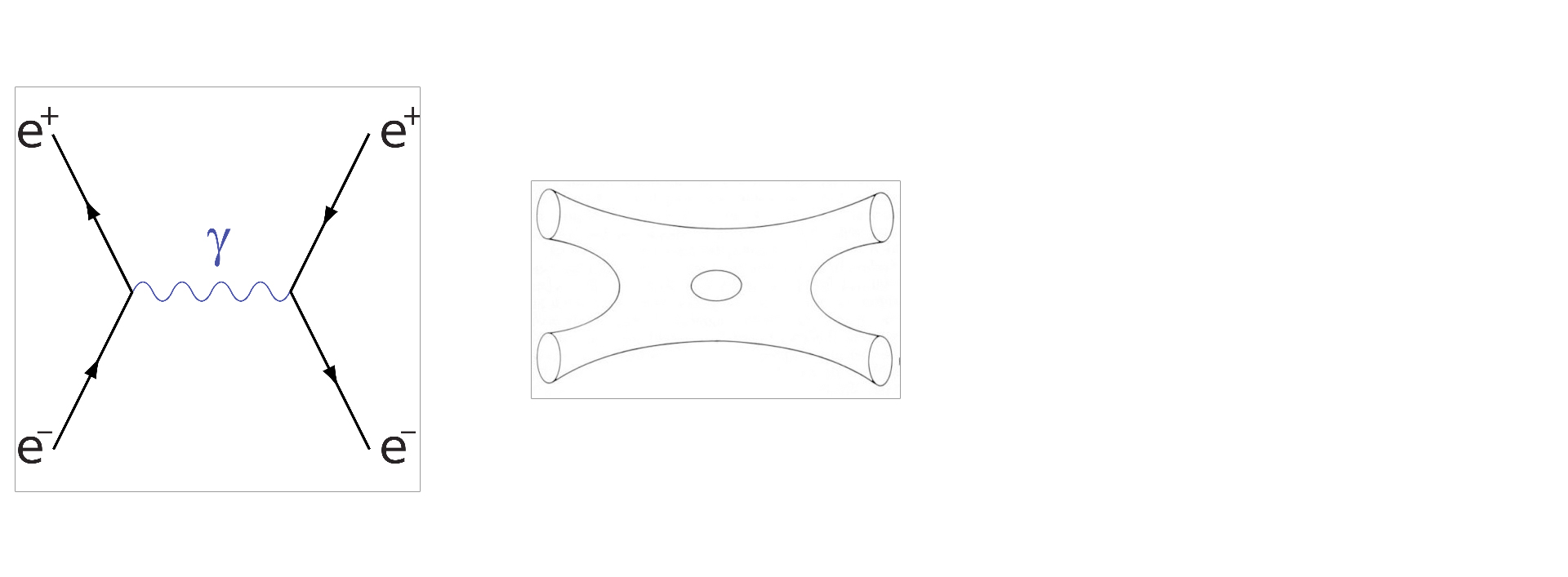
String Theory Legos for Black Holes
By Professor A.W. Peet
https://www.youtube.com/watch?v=MlDd2HtFfPU
We are jumping in at 35.50 minutes
“So, what is the problem if you just try to use Einstein’s theory (General Relativity) to do Black Hole Physics? Well, the problem is that the fundamental ingredients: Einstein’s general relativity and quantum mechanics turn out to be allergic to each other, like warring marriage partners that can’t stand to be under the same roof.
And how does this arise? Well, general relativity, which was born about a century ago, is a very well tested theoretical description of heavy things; things like planets, stars, galaxies, and even the whole cosmos. Whereas quantum mechanics, born slightly later, is an exquisitely well tested theoretical description of very small things; things like molecules, atoms, and quarks.
Now, both general relativity and quantum mechanics have nearly a century’s worth of data backing them up. But unfortunately, they are fundamentally incompatible. The real reason is that general relativity is all about the smooth fabric of space time, so it’s a kind of chill concept, whereas quantum mechanics has a random jumpiness built into it.
And this is not just a minor problem, it’s a fairly major theoretical emergency; a little bit like the situation of having roads that were governed by incompatible traffic rules. So, it’s a bit like general relativity says keep left, and quantum mechanics says keep right, and then the question is do we ever have situations where these overlap; in which case, we would have carnage and dead bodies everywhere.
So, can we just sweep this problem under the rug? Can we just say, well… general relativity you can stick to governing heavy things, and quantum mechanics you can stick to governing small things, and we’ll pretend that those Venn diagrams of heavy things and small things never overlap. Can’t we just sweep it under the rug?
And the answer is no, because their might be physical systems that are both heavy and small, in which case, we would have to apply the rules of gravity and quantum mechanics at the same time. So, we need to have a theory of quantum gravity to be able to explain those very extreme physical systems.
And there are two places where this happens; one is in a black hole, and the second one is at the big bang when the universe itself was super tiny and there was a lot of stuff in it. So, that’s why we need a theory of quantum gravity.
So, why is string theory the superior tool to use in this context? Well, that’s because it manages just by positing that the Legos of the universe are strings and not particles; it manages to fix this war between quantum mechanics and general relativity.
It’s like String Theory’s a bigger tent that says, ‘Hey, you can both come under my tent. It’s ok we can have both quantum mechanics and general relativity; but because my tent is bigger, we will manage to let you work together under same roof. “
Thank you, Professor A.W. Peet.
In my interpretation of this, string theory has a very elastic framework, that can manage both the jittery quantum theory and the predictable general relativity. And the way this is done is by including ‘time’ into equation, which I will come back to soon.
Professor Edward Witten
“If Einstein had never discovered relativity, it may have been discovered as a by-product of string theory”.
“General relativity, in some sense, is for free.”
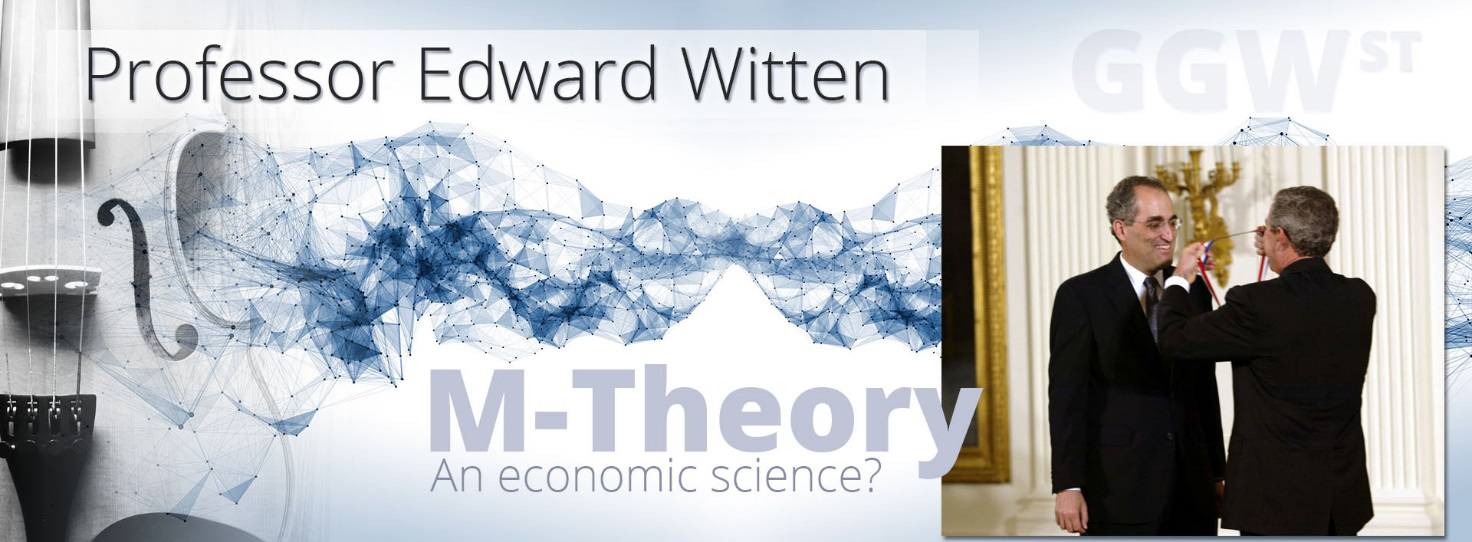
Professor Edward Witten
Winner of the Fields Medal
Charles Simonyi Professor at Princeton University
Professor Edward Witten is widely accepted as the father of M-theory and a leading expert on the M-theory founding discipline, ‘String Theory.’
For those who do not fully appreciate M-theory (which is many as it’s not that widely known), let’s hear from Professor Stephen Hawking who I am very sad to have missed.’
About M-Theory – The Theory of Everything
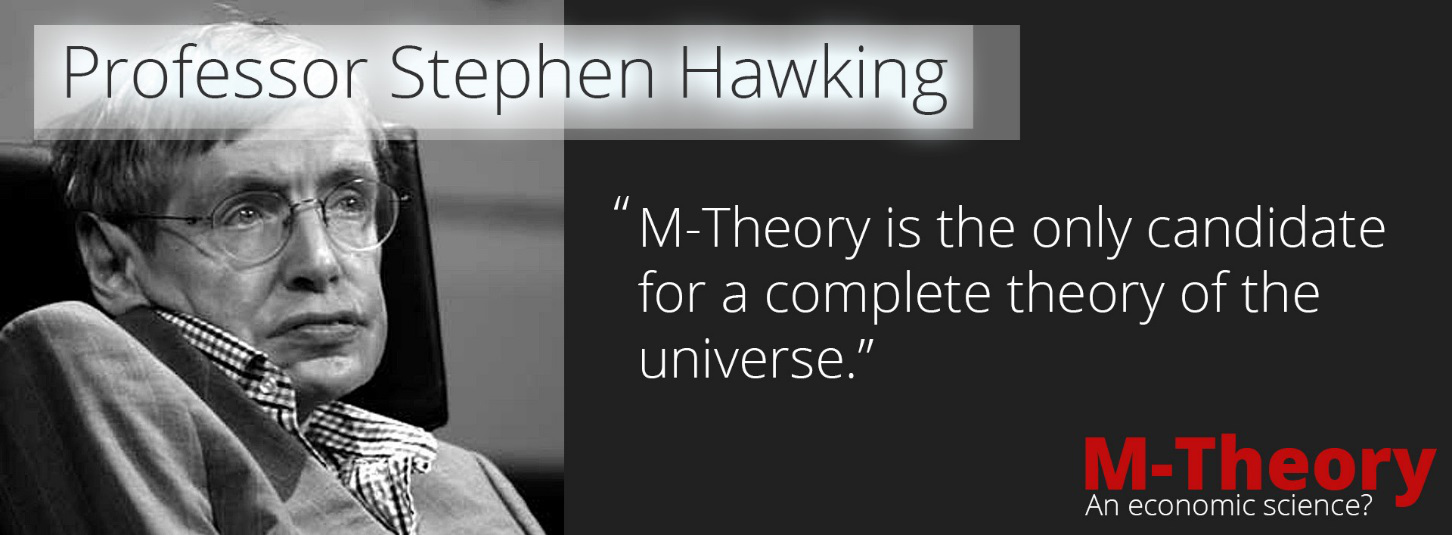
“M-Theory is the only candidate for a complete theory of the Universe.” And…
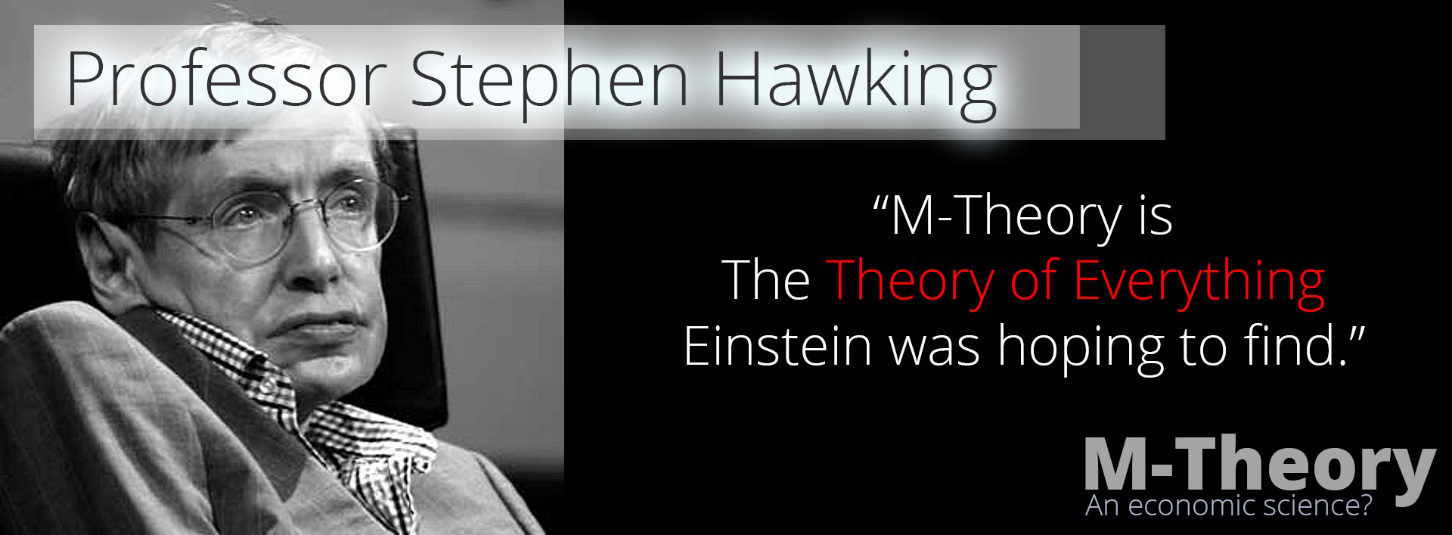
“M-Theory is The Theory of Everything Einstein was hoping to find.”
For a quick introduction to M-theory, see Ed Witten – Mystery Theory (‘Big Ideas’ Interview). And for a more in-depth discussion, see Edward Witten’s lecture On the Shoulders of Giants.
Here are some useful extracts from the ‘On the Shoulders of Giants’ lecture which are in the same family as the Peet Tent.
“This is the conundrum in physics… The two best theories of the age are quantum theory and general relativity, and there has to be some way to make them work together. Because for example, we apply general relativity to stars, but the stars are ultimately made out of atoms and subatomic particles.
We know that quantum mechanics works for the subatomic particles. It does not make sense to have one theory for the individual atoms making up a star and a completely different theory for the star. There has to be some way of combining the two theories to make them work together, but along conventional lines that does not work.
It turns out that one of the states of a vibrating string turns out to be a graviton, ‘a basic quantum unit of the gravitational field; analogous to the photon which is a basic quantum unit of light.’
To say this differently, ‘when we unify the elementary particles and their forces using string theory, we get general relativity for free as part of the bargain.”
So, it appears one does not need to unify quantum mechanics with general relativity (Einstein’s Theory of Gravity – 1915), one only needs to unify quantum mechanics with special relativity (Einstein’s theory of space and time [Spacetime – 1905]); and by matching quantum mechanics with special relativity via the ‘Peet Tent’ and String Feynman diagrams (see below), one gets general relativity for free. So, in fact, ‘The Theory of Everything’ in the physics of string and M-theory can be simplified to what will unify quantum mechanics and special relativity.
(Non-Physics readers… Don’t panic, this should all make a lot more sense when we start to describe the metaphors and analogies in financial terms, coming soon.)
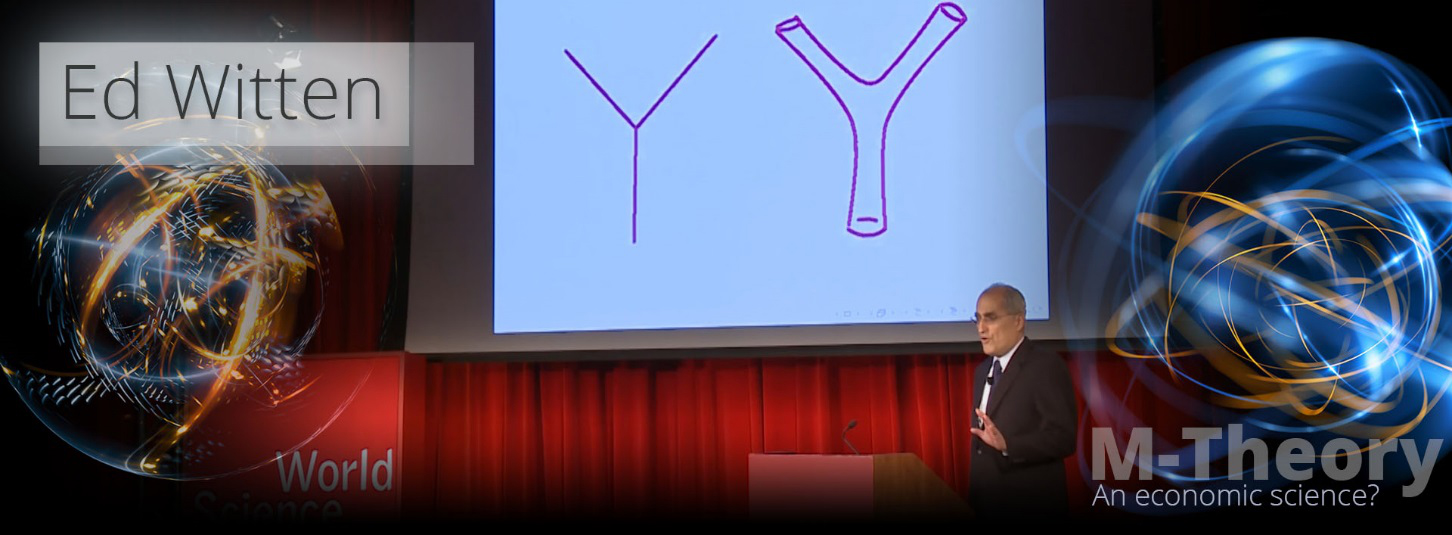
Above, we see two Feynman diagrams; a standard ‘Y’ on the left and a ‘baggy/elastic’ String Feynman ‘Y’ diagram on the right. Per Dr Peet’s lecture, the string version is so baggy and flexible that it can accommodate both the predictable smooth results from general relativity with the uncertain and erratic results of quantum mechanics under one big tent, hence ‘The Peet Tent.’
One big difference is ‘time.’ At the point where the ‘Y’ splits on the left is a particle reaction at a precise time, versus the String Feynman diagram on the right which is more flexible. The same event could happen at different times. And that’s how string theory manages to unify Einstein’s special relativity, being space and time (spacetime) and quantum mechanics, which leads to a unification of quantum mechanics and general relativity because as Witten says, ‘We get general relativity for free.’
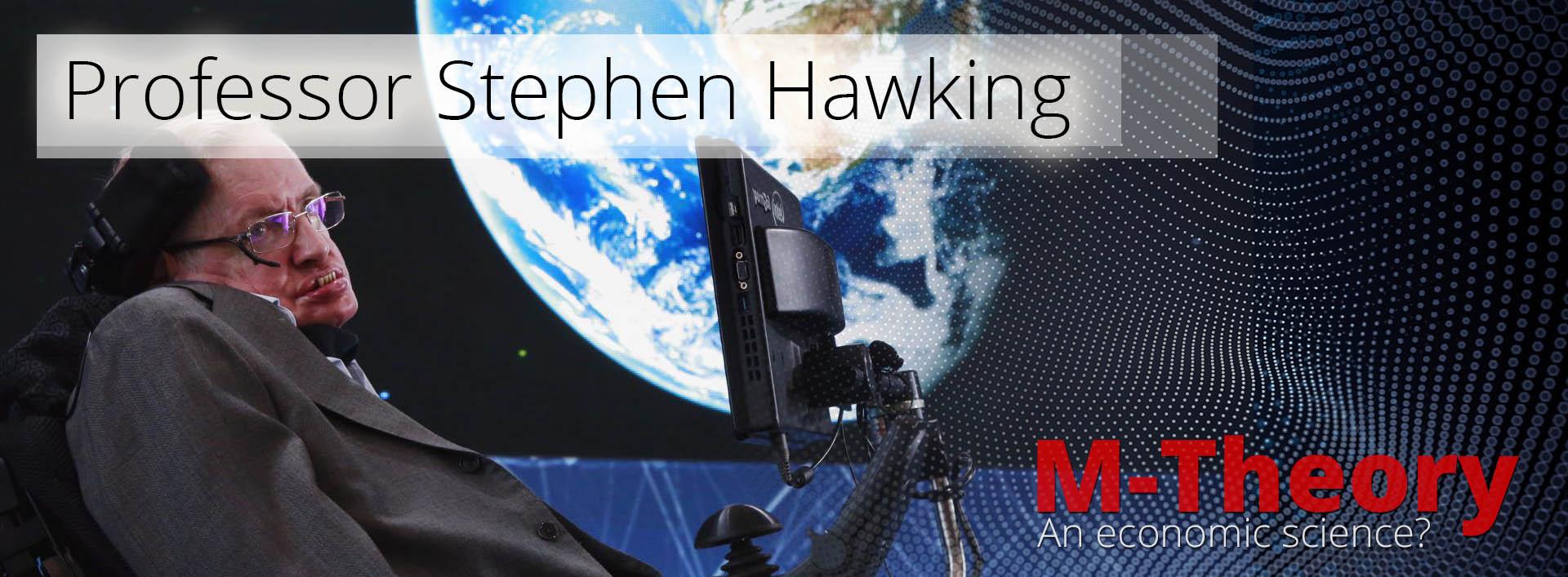
“If we do discover a complete theory, it should in time be understandable in broad principle by everyone, not just a few scientists. And when that happens, all of us will be able to discuss the why rather than the how.”
Professor Stephen Hawking (paraphrased)
The Peet Tent in Economics
Fortunately, (I hope) by associating the interactions of the Peet Tent in physics with everyday objects and events, we not only start to create a powerful economic framework based on billions of years of natural fine-tuning; as a ripple effect, we also create a way to teach the basics of the physics of string theory to economists and others.
Our common frame of reference is money, specifically the financial results of each S-World company. Below, we see a simulation of the Peet Tent in economics, where in place of general relativity, we have winning businesses; and in place of quantum mechanics, we have losing businesses, which all fit under S-World’s own Peet Tent. So long as there is enough money in the network, all companies are safe. The Peet Tent can unify all losing and winning results into a safe financial framework.
It’s that simple, but as we will see by the end of this book, in the chapter ‘Sting Theory for Extreme Economic Conditions,’ the potential outcome if profoundly powerful and very desirable as the Peet Tent, sees ‘American Butterfly’ become circular.
Having invested its time and resources in the Network (both home and abroad), in the case of US Hyperinflation, a decade or two down the road, the Grand Networks in countries previously in abject poverty must follow the Peet Tent Law and pump up to 50% of all cash flow into the USA, Europe, and Japan; until the potential financial crises (be it FIAT currency or other) is averted.
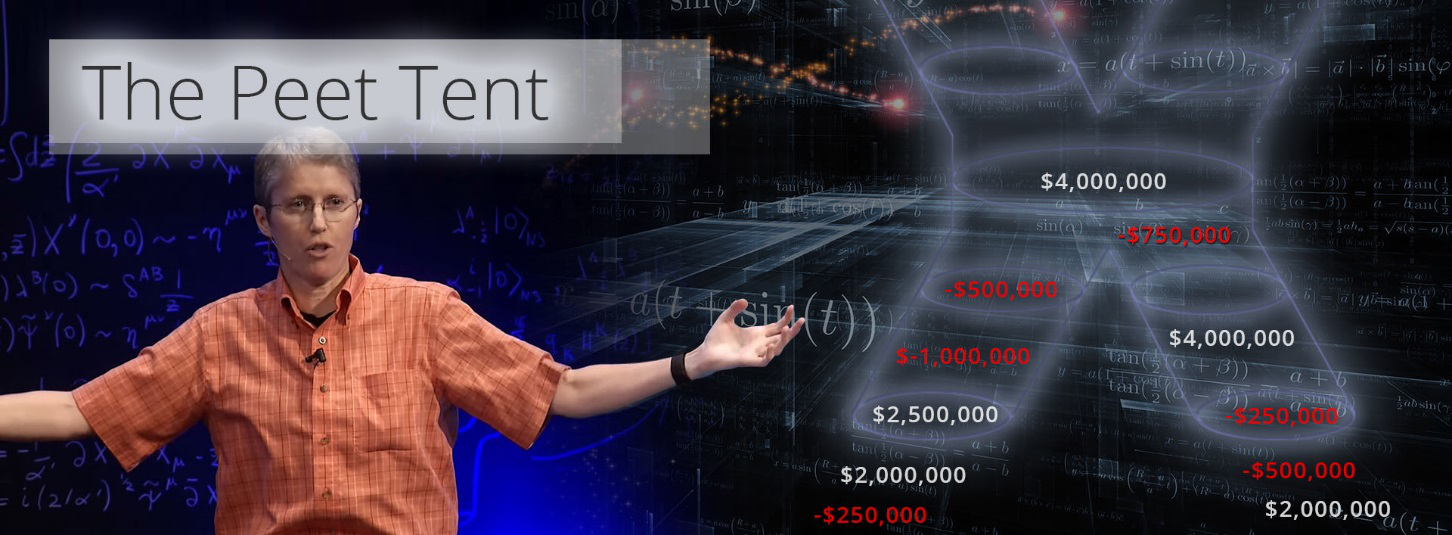
The Peet Tent is a shape of the S-World string that protects companies from failure within the network. In the end, the simulation in economics was simple enough (albeit it would take years to work out in my mind), one must make provision for companies in trouble.
If applying the Susskind Boost (which we shall look at shortly) did not work by adjusting opportunities, one must apply the Peet Tent which provides direct income to the Susskind Boost, so boosting troubled companies back to health and then fitness.
This works equally for companies on their way to POP (presented soon or see Book 2. Chapter 2. ‘The Flap of a Butterfly’s Wings,’) and for companies that have achieved POP but have since fallen backwards.
So long as there was enough income for the Peet Tent, all companies are safe, permanently.
This book has been written around the S-World UCS™ Lake Malawi Network. In this scenario, 3.125% of every trade is destined to the ‘Susskind Boost’ and ‘Peet Tent,’ which is mostly spent boosting the profits of the weaker companies. However, when needed, with a power that is almost unconstitutional, the Peet Tent can rake in as much as 50% of all cash flow throughout the network; hundreds then thousands, then millions of business and individuals contributing.
It is these businesses and the cash flow they can command that will restore chaotic economic conditions in the face of a financial meltdown in currently rich countries.
However, it’s important to know that the Peet Tent can only live up to its ideals when the S-World Network is massive.
Currently, however, the Peet Tent is here to protect companies from failure (not unlike an organization such as ATOL that guarantees customers their money back if their travel company or airline went into liquidation), but instead of reacting after the event, the Peet Tent reacts before (prevention is better than cure), in multiple phases, starting with the Susskind Boost (the stable mate of the Peet Tent).
The Peet Tent Liabilities
In addition, the Peet Tent also assess the liabilities of each company before they are founded in the first instance.
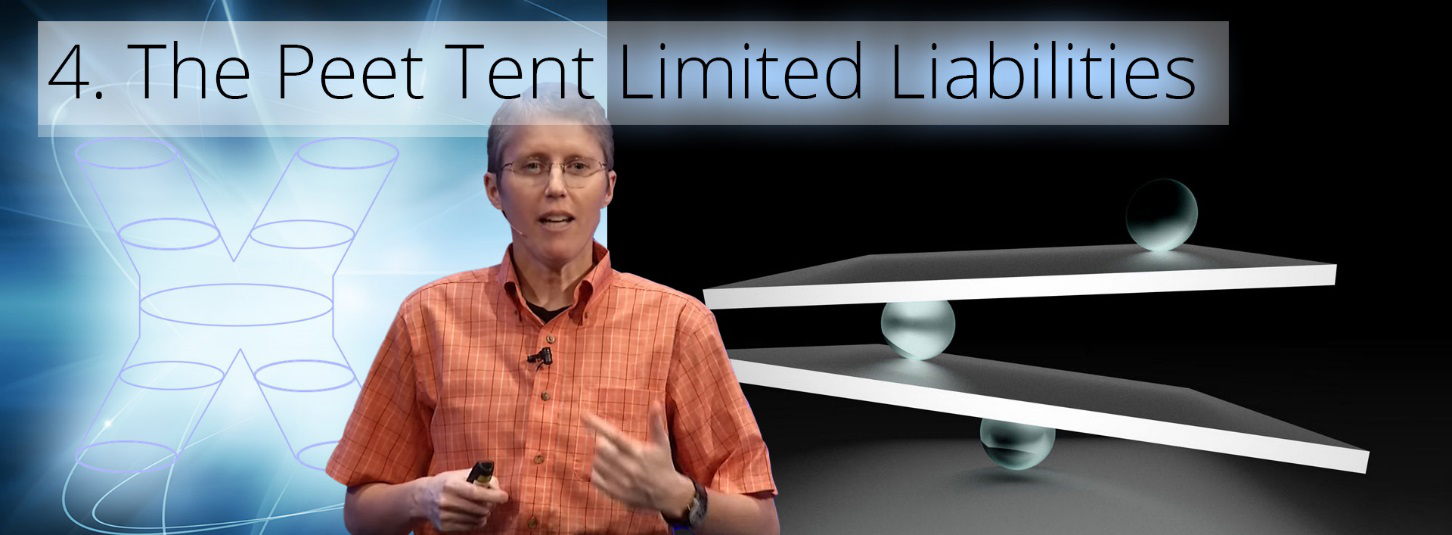
The Peet Tent & Quantum Safe Forecasting
www.angeltheory.org/the-peet-tent-2016-2017
QSF or ‘Quantum Safe Forecasting’ borrows from the Heisenberg uncertainty principle, making safer forecasts.
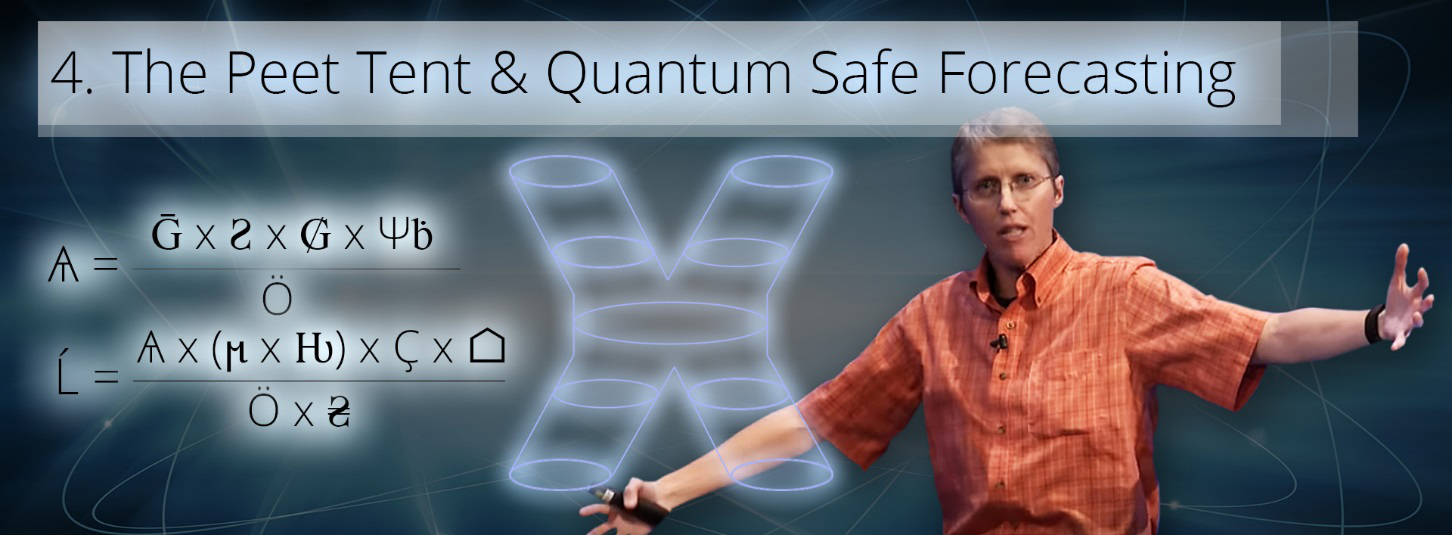
I shall not go into the algebraic math here; other than to say that in the top equation, the first 3 characters are different limiting variables, based on the Heisenberg uncertainty principle where simply by adding limiting variables, we increase the probability of matching or exceeding our POP targets. And that in the second equation, we primarily look at the advantages and disadvantages of different locations.
This set of equations still needs quite some work, but the principle is that it looks for laws of diminishing returns and uncertainties, and only when few are found does it allow an S-World company to be created.
The Peet Tent and ‘Quantum Safe Forecasting’ create a worst-case scenario, and adjusts for different locations, different sized marketplaces, and different base costs as seen in the graphic below.
Companies start at M-System 1, get enhanced by M-System 2 and 3, before getting to M-System 4. The Peet Tent; once all the limiting variables are added, a company will either pass the test and move forwards to M-System 5 and beyond, or move back to M-Systems 3, 2, and 1 to try again with a different or amended strategy.
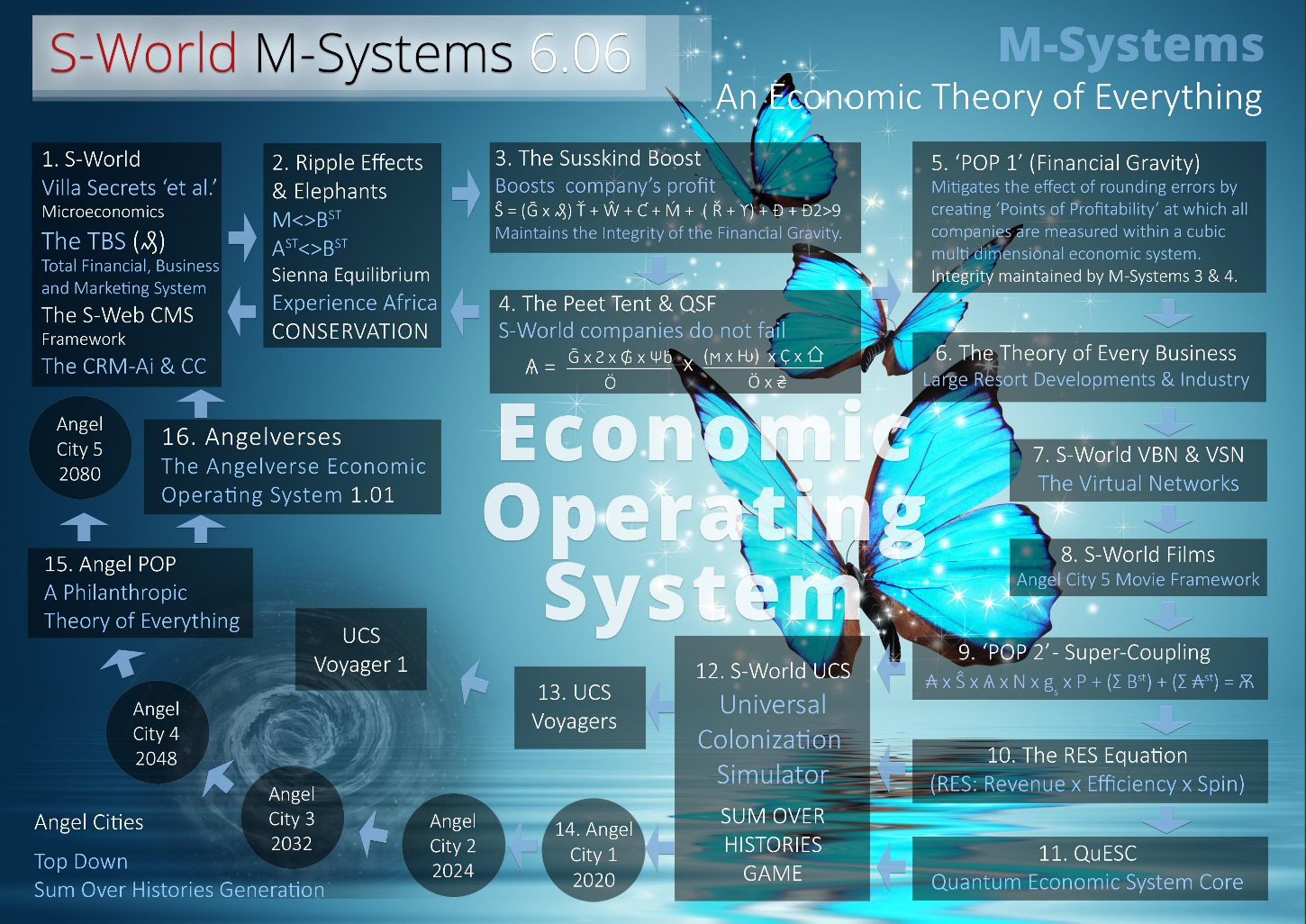
For more on the Peet Tent and Quantum Safe forecasting including the particulates of the QSF equation, read www.angeltheory.org/the-peet-tent-2016-2017. In addition, the Peet Tent is also described in Book 2. Part 1. Chapters 3. The Network on a String and 4. Super Coupling.
There is also an older ‘work in progress’ from 2016/17 that considers various M-Systems and was a significant factor in M-System 15. Angel POP: www.angeltheory.org/m-systems/for-dr-amanda-peet.
The Susskind Boost (M-System 3)
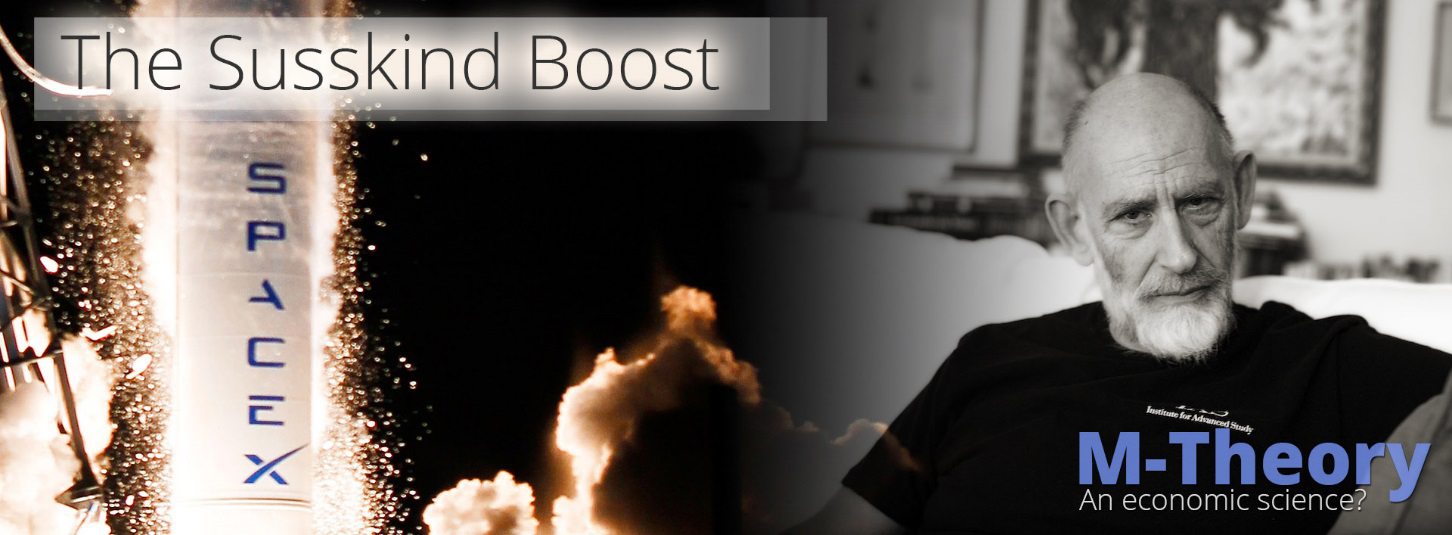
Let’s look at the Susskind Boost and, at the same time, have another look at how S-World economics are often created from simulations of the laws of nature as described by ‘M-theory.’
The Susskind Boost – M-System 3 (Fundamental Component)
Ŝ = (Ḡ x ₰) + Ť + Ŵ + Ƈ + Ḿ + ( Ř + ϒ) + Ð + Ð2>9
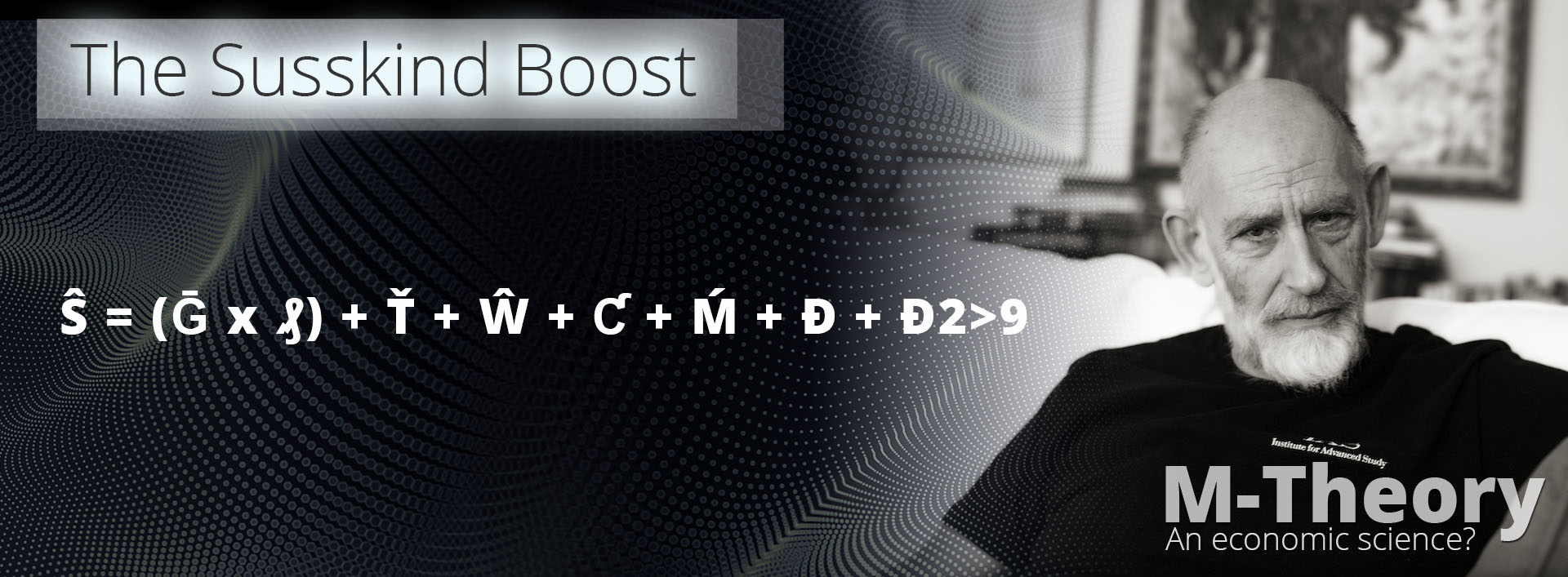
Where Ḡ = Gross Profit and the (electric s) ₰ = the S-World TBS™ (Total Business Systems), which so far for Villa Secrets creates 81 different ways to make money, save money, or avoid landmines; many of which are unique, all are significant, and when used in combination become disruptive. (Business using the software will disrupt their current marketplaces.)
Where after, we add different boosting opportunities: Ť = Tenders or agency contracts (the main power behind this book and Book 3. ‘The GDP Game’), Ŵ = Additional websites and companies, Ƈ = Contracts &/or Mandates, Ḿ = The Marketing Multiplier, plus there are newer factors to add such as Ř = higher ROI advertising opportunities, and (a kind of palm tree Y symbol) ϒ = which accounts for network credits being pushed a company’s way (a very significant boost).
Then, from M-System 2. Ripple Effects and Elephants, we add the dimension ‘Ð’ and the Ast⇔Bst which calculates the ripple effects from other businesses in the local network; and after, in Ð2 to Ð9 and beyond, we calculate the effects from other strings and ripples in the greater network.
Stanford University
Lecture 1 | String Theory and M-Theory
Professor Leonard Susskind
www.youtube.com/watch?v=25haxRuZQUk
(Note that Professor Susskind’s hand is drawing a string Feynman Diagram.)
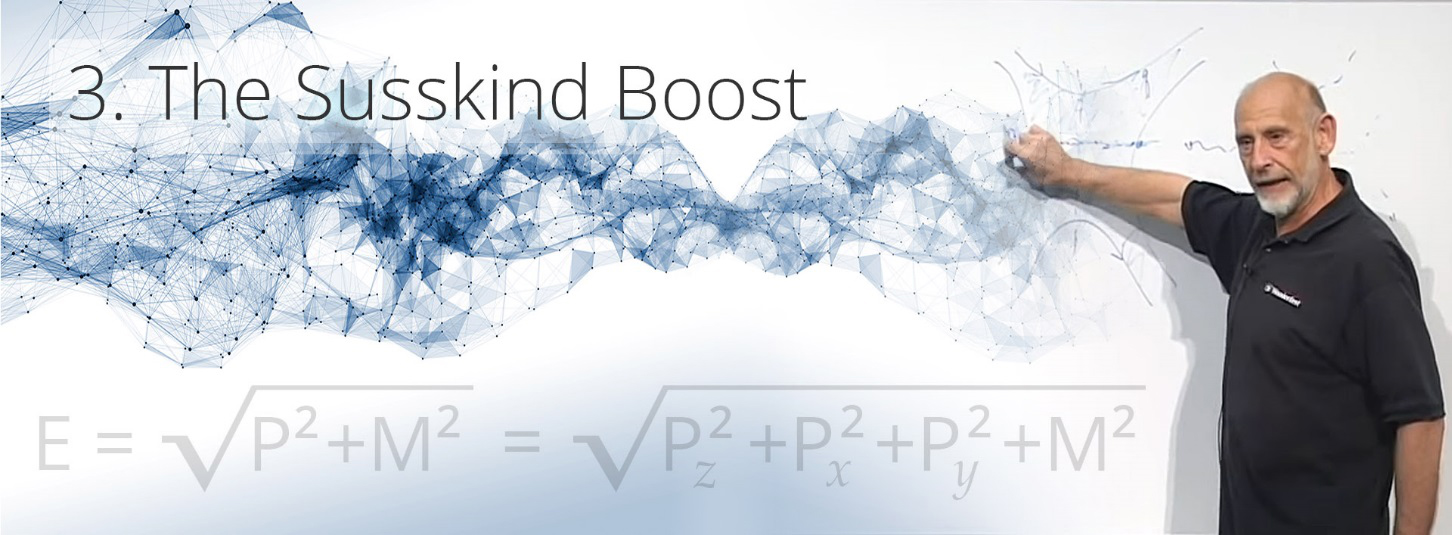
‘We boost the hell out of the system along the Z axis (gross profit) until every single particle (company) has a huge momentum.
If there is any particle (company) that is going backwards along the Z axis (gross profit), you just have not boosted it enough.
Just boost it some more until it’s going forward with a large momentum.’
To apply this to the network, as you can see, I changed ‘a particle’ for ‘a company’ and ‘the Z axis’’ to ‘gross profit.’ And in general, we always boost the weakest companies in the network until they are going forward and are creating a healthy POP investment.
Until recently, the full equation was Ŝ = (Ḡ x ₰) Ť + Ŵ + Ƈ + Ḿ + (Ř + ϒ) + Ð + Ð2>9.










